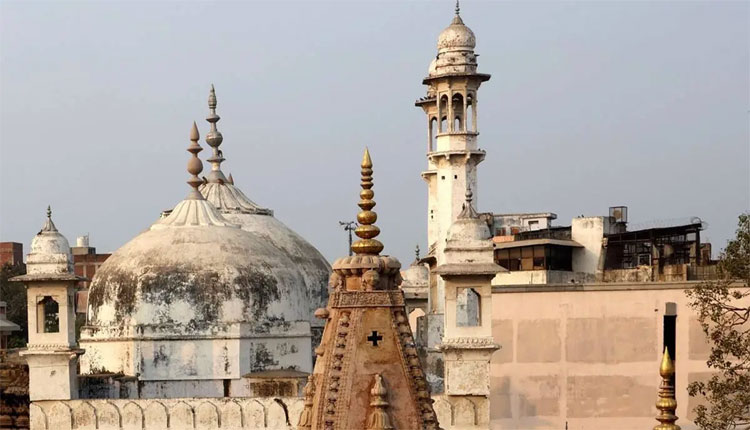Varanasi: The Archaeological Survey of India (ASI) has submitted a significant report to the Varanasi district court, confirming that there is pictorial evidence suggesting that the Gyanvapi mosque complex was once part of a Hindu temple. This development comes as the ongoing legal battle over the Gyanvapi structure continues.
Sources close to the matter revealed that the ASI has documented numerous pictorial evidences supporting the claim that the Gyanvapi mosque was built on the remains of a pre-existing temple structure. The report, which was submitted in a sealed cover to the court on Monday, has ignited discussions and heightened anticipation among stakeholders involved in the case.
Earlier this week, the ASI had presented its scientific survey report on the Gyanvapi mosque complex to the court. The court had instructed the ASI to conduct the survey to determine whether the mosque was built on the ruins of a Hindu temple. The report was supposed to be shared with the petitioners on December 21 and a copy was also sent to the Supreme Court.
The ASI’s survey findings have shed new light on the historical significance of the Gyanvapi complex and its potential link to an ancient Hindu temple. The pictorial evidences gathered during the survey are expected to play a crucial role in determining the outcome of the legal battle surrounding the ownership and religious significance of the disputed structure.
The discovery of pictorial evidence linking the Gyanvapi mosque to a Hindu temple has sparked debates and discussions among historians, archaeologists, and the general public. The ASI’s report is a significant development in the ongoing legal proceedings, and its findings could potentially shape the fate of the Gyanvapi complex. The court’s decision on the matter is eagerly awaited, and the outcome may have far-reaching implications for the preservation of historical and religious sites in India.



Comments are closed.